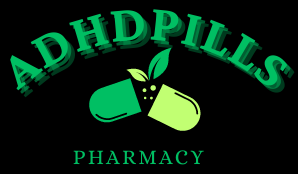Introducton:
Attention-Deficit/Hyperactivity Disorder (ADHD) is a neurodevelopmental disorder that affects both children and adults. It is characterized by a persistent pattern of inattention, hyperactivity, and impulsivity that can interfere with daily functioning and quality of life. ADHD presents in different subtypes, namely hyperactive, inattentive, and combined. Understanding the symptoms associated with each subtype is crucial for accurate diagnosis and effective management. In this article, we’ll provide a comprehensive ADHD symptoms checklist for each subtype, helping individuals and their loved ones recognize the signs and seek appropriate support.
I. Inattentive Subtype:
The inattentive subtype of ADHD is often referred to as ADD (Attention Deficit Disorder) and is characterized primarily by difficulties sustaining attention and organizing tasks. Individuals with this subtype may exhibit the following symptoms:
- Difficulty Focusing: Trouble concentrating on tasks, frequently making careless mistakes.
- Easily Distracted: Getting sidetracked by external stimuli, leading to incomplete work.
- Poor Organization: Struggling with organizing tasks, activities, and belongings.
- Forgetfulness: Frequently forgetting important appointments, deadlines, or instructions.
- Avoiding Tasks Requiring Sustained Mental Effort: Procrastination on tasks that involve mental effort.
- Losing Items: Misplacing items necessary for daily activities, like keys or phones.
- Lack of Attention to Detail: Overlooking details in school, work, or personal tasks.
- Difficulty Following Instructions: Struggling to follow multi-step instructions or directions.
II. Hyperactive Subtype:
The hyperactive subtype of ADHD is characterized by excessive physical activity, impulsive behavior, and difficulty sitting still. Individuals with this subtype may experience the following symptoms:
- Restlessness: Inability to stay seated or still for extended periods, even in situations that require it.
- Excessive Talking: Talking excessively, often interrupting conversations of others.
- Fidgeting: Constantly moving hands or feet, tapping, or squirming in their seat.
- Impulsivity: Acting without thinking, often leading to potentially dangerous situations.
- Difficulty Waiting Turns: Struggling to wait their turn in conversations or games.
- Blurting Out Answers: Responding to questions or statements before they are fully expressed.
- Impatience: Being unable to tolerate delays or situations requiring patience.
- Interrupting Others: Interrupting others during conversations or activities.
III. Combined Subtype:
The combined subtype of ADHD is the most common presentation, involving a combination of inattentive and hyperactive symptoms. Individuals with this subtype display a wide range of behaviors, including those mentioned in the above subtypes.
- Symptoms from Inattentive and Hyperactive Subtypes: A combination of both inattentive and hyperactive symptoms, impacting various aspects of life.
IV. Diagnosing and Managing ADHD:
Diagnosing ADHD involves a comprehensive evaluation by a qualified healthcare professional. This is done often using established criteria such as those outlined in the Diagnostic and Statistical Manual of Mental Disorders (DSM-5). Early intervention and appropriate management strategies are crucial for minimizing ADHD symptoms’ impact on an individual’s life. Management may include:
- Behavioral Therapies: Techniques to improve organizational skills, time management, and impulse control.
- Medications: Stimulant or non-stimulant medications that can help manage symptoms.
- Educational Support: Individualized education plans (IEPs) and accommodations in academic settings.
- Parent and Family Education: Training for parents and families to support individuals with ADHD.
- Lifestyle Modifications: Adequate sleep, regular exercise, and a balanced diet can positively influence symptom management.
Conclusion
ADHD is a complex disorder with various subtypes that present distinct symptoms. Recognizing the signs associated with the inattentive, hyperactive, and combined subtypes is essential for early intervention and effective management. Seeking professional guidance and support can greatly improve the quality of life for ADHD patients and their families.




